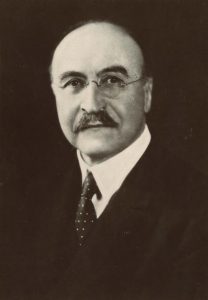In the first half of the 20th century Bakelite was used for everything from jewellery, telephones, radios, lamps, clocks, kitchenware, to billiard balls. Their appeal today come from Bakelite’s distinctive look which represents a time when more and more consumers were able to take advantage of previously out-of-reach fashions and consumer goods.
Prior to the invention of Bakelite, the first entirely synthetic plastic, plastics were made from natural substances such as rubber from rubber trees and shellac from secretions of the lac beetle. Natural plastics were however difficult and expensive to obtain and as the demand for materials increased during the industrial revolution, chemists began experimenting to create new man made (synthetic) materials.
It was in 1909 when a Belgian chemist named Leo Baekeland created the first entirely synthetic plastic which he called “Bakelite”. The way goods were manufactures were revolutionised because of the invention of Bakelite. Its properties, including its resistance to heat and nonconductivity, made it particularly useful in the automotive and electrical industries as an insulator, and it was also suitable for a much wider variety of purposes.

Bakelite began a new era of affordable, convenient consumer products, it was versatile (could be moulded into almost any shape), it was lightweight, durable, sleek and could be made into bright colours. Its use increased dramatically as manufacturers realized its potential making it possible for all consumers to enjoy products that previously had been inaccessible.
After the 1950s, a large variety of plastics appeared in the marketplace and edged out Bakelite in all but a few specialized (mostly electrical) uses.
